

Residents of Namakye, Bulusambu Parish In Mbale district get clean drinking water from groundwater sources courtesy of selfless work by the Wanda family
In the little village of Namakye in Bulusambu Parish Busiu Sub County in Mbale district, villagers have been enjoying clean and abundant drinking water for the last 7 years without having to pay a single penny for it.
It is thanks to a generous donation by two of their sons who wanted to banish their own memories of carrying water on the head for long distances.
Mr. Nathan Wolukawu Wanda and his young brother Mr. Michael Wamateke Wanda were raised in the 1960s and 70s in a humble family. Like most kids in poor rural areas of Uganda, one of their primary responsibilities at home was to fetch water. It was a strenuous job especially for the youngsters because of the laborious nature of the task, but also because of the dangers they encountered of having to fetch water from exposed ponds.
“We grew up in the village. Apart from doing other jobs such as digging, there was the job of fetching water. And usually it is the young people who fetch water for the older ones. At one time, my brother was the one fetching water for me,” recalls Mr. Wolukawu.
They were fortunate to have an education and jobs that exposed them to new knowledge of accessing clean water from alternative sources such as ground water.
Mr. Wolukawu went on to become a geologist and worked with the former Uganda Cement Industries ltd, before it was privatized and renamed Tororo Cement. His young brother Michael emigrated to Belgium where he stays to date and only visits regularly.
During one of his trips back home in the early 1980s, Michael was annoyed that life had not changed at all for many years since they were children; women and children still had to fetch water from dirty ponds and carry it on their heads for long distances.
He consulted with his brother Mr. Wamateke about what they could do to try to erase the haunting images, at least for their village. Their inquiries led them to a project that was sponsored by the Danish International Development Agency (DANIDA). Nathan recalls that the project offered to drill boreholes for communities, on condition that the community members would at least make some financial contribution towards meeting the cost of the borehole. In most cases, he recalls, this was usually meant to ensure that the community shared into the project and to not look at it as some other donor project.
Nathan volunteered to raise the money himself, and successfully applied for the borehole.
As luck would have it, during the drilling process, the engineers landed on a huge reservoir of water buried under the rocks.
“The people who were drilling were known to me and they told me that they had landed on an aquifer – a system of rocks that is able to store water – that had so much of the water resource that even if we wanted to use it for small scale irrigation, we could not easily exhaust it.
The borehole was installed and the villagers got some relief, at least from having to drink dirty water from ponds. But many still had to move some distance to reach the borehole.
Again, when Mr. Wamateke returned to the country, he was dismayed by the long queues at the borehole to fetch water. He reached out to his brother with a better idea; to improve the well and add more taps so that people would not have to spend a lot of time in the queue.
Mr. Wolukawu’s advice was to buy a big storage tank, put it on an elevated platform of about 10 meters above the ground to create sufficient gravitational force for the water to flow and add several taps where people would get the water. They also needed a generator to power the water pump.
They agreed and sat down to calculate the cost. Nathan recalls that although the cost exceeded 20 million shillings, the burning determination to break the jinx of water scarcity, led the duo to ignore the costs that they faced.
Mr. Wolukawure calls that one of the huddles they encountered, was lifting up the 24,000litre tank to the raised platform.
“We had to spend UGX2.5M ( 695 USD) to hire a crane from Kampala so that it could come to do a 10-minutes job of lifting the tank and place it on the platform. But we were determined to achieve it,” recalls Mr. Wolukawu. But all this didn’t matter for they were determined to have water for their community.
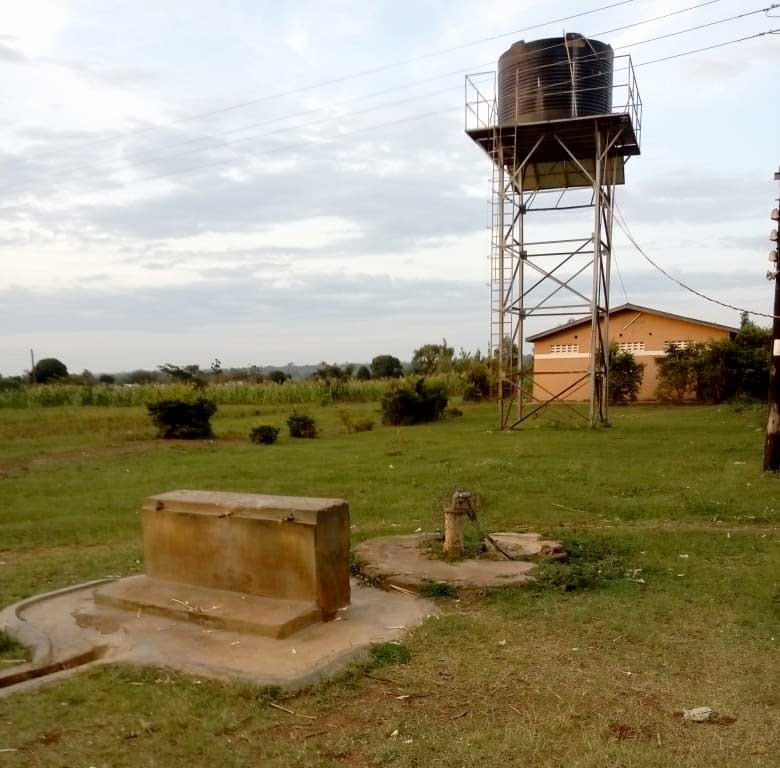
The giant 24,000litre tank was manufactured on a special order by the Wandas, but raising it to the 10 metre platform proved challenging.
Like all endevours, this one wasn’t without. Because Mr. Wolukawu worked away from the village, he entrusted the project with some young people to oversee its operations. Those who were entrusted with the job didn’t share the same passion of the founders. They siphoned the generator fuel and sold it to boda boda cyclists in the village. With fuel theft, the water taps started to run dry. The initiators devised other means. They switched from generators to using solar power.
To cope with the challenge of ensuring that they would continue to cover maintenance costs for the facility, they decided to open up another business. They settled on opening a water bottling business.
“I told my brother that for us to continue to provide free water to the community; we should start a water selling business so that the cost of pumping could be covered by the business. We agreed on that. So he looked for some money to buy machines for bottling water and a water purification system,” recalls Mr. Wolukawu.
Having the critical raw-material – water – greatly helped the Wandas to start producing Aquaria bottled water – one of the first locally-made brands of mineral water that were produced and consumed in Mbale town.
The Aquaria bottled water brand would probably have grown bigger had it not been perhaps the over-ambition on the part of the founders. After a boom period, they diverted the profits into a maize mill which not only took away the attention of the owners from water business, but also attracted the workers who got the extra motivation of going home with some food from the new mill.
The recent COVID-19 lockdown compounded the troubles of the water company and its revival remains a subject of discussion.
In the meantime, the founders decided that as they look for new management to run the water bottling business, whoever in the village could afford to buy and install pipes to their home, they are free to do so.
“For the less privileged members of the community, we extended pipes to three more points covering a radius of about 350 metres. And we also agreed that as one takes water to his or her home, they should install taps along the way where people can get the water without having to move long distances,” says Mr. Wolukawu.
Thanks to the philanthropic venture, almost the entire population of Namakye – about 300 households has been able to receive clean and abundant drinking water free for the last 7 years.
And during the dry spell, Nathan says, more people from distant places ride bicycles and motorcycles to Namakye to fetch the clean water. They are bot prohibited.
Benefits to the community
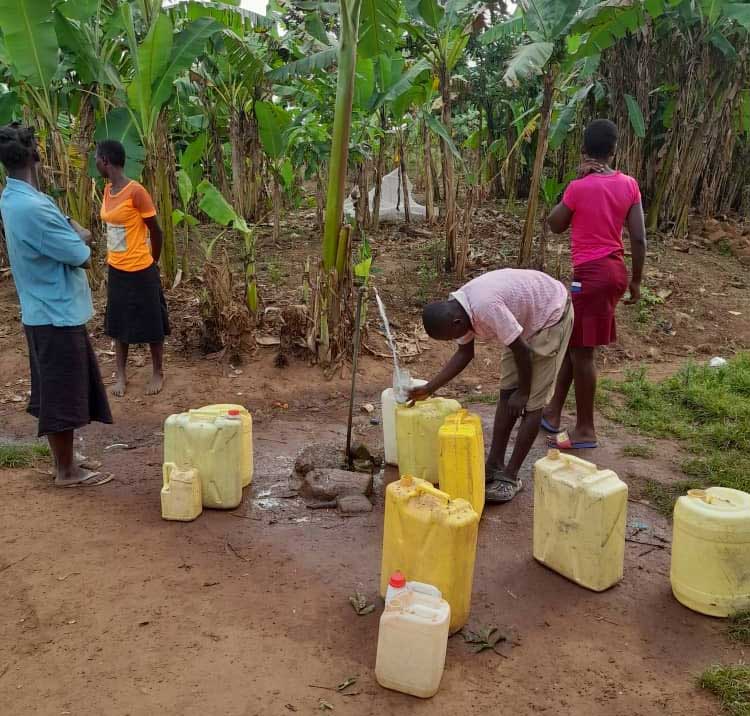
Through a network of taps that spread to a radius of about 350 metres across the village, villagers are able to get clean drinking water
The community of Namakye village is full of praise for the Wandas for the indisputable selfless gesture.
Mr. Makuma Franco, the Village chairman observes that ever since his community started receiving the piped water, he has not witnessed cases of residents suffering from water-born related diseases.
“Previously, people were fetching water from open air wells and from the nearby river Manafwa. But since we got piped water, the people are happy and healthy,” says Mr. Makuma.
The piped water, he adds, saved them another scare. During heavy rains, river Manafwa, one of the sources of water for his community by then, would come with coffins and human remains that had been uprooted by landslides that often ravage the highlands.
The disappearance of water-borne diseases, according to Mr. Wolukawu, is largely due to the fact that groundwater is generally less contaminated compared to surface water sources like ordinary ponds or rivers.
The extension of ground water to reach more residents of Namakye using pipes has proved to be a viable and important innovation for solving access to water challenges in rural areas.
Considered by many as the best option for drinking water in homes, improved ground water sources such as Namakye’s have the advantage of offering more advantages to the society particularly women and children who culturally fetch water in homes, but are also become more vulnerable whenever it’s contaminated.
If uncontaminated by latrines, borehole water not only often reduces disease burdens, it promotes better education outcomes as children spend less time fetching water before classes.
For Mr. Wolukawu, the Namakye groundwater experiment shows that it is possible to have affordable water supplied to communities to even perform bigger functions such as business development, or even supplementary irrigation. Currently, Nathan is contemplating using some of the water to establish a watermelon farming project.
“Our experience shows that it is possible to give people clean water to local communities in a more cost-effective way, than perhaps transferring piped water from the main grid network,” Nathan adds: “We would not even be suffering from food shortages like we’re currently if people had a way of tapping some of this groundwater to irrigate their crops.
The widespread distribution of boreholes that offer communities access to clean water in many parts of Uganda, proves that indeed some effort has been done either by the central or local governments as well as by non-governmental organisations to try to solve the domestic water challenge that continues to plug most communities.
An important resource
Dr. Michael Kizza, the Deputy Executive Director of NBI, observes that a considerable number of people in rural areas that stay away from the main water grids, depend on groundwater, compared to those that depend on surface water.
“Groundwater is a very important source of water especially for domestic use in most parts of Uganda, but also increasingly for industrial operations and for irrigation. In fact, because it is more widely distributed than surface water sources, you find that many people depend on it, especially those that are located away from major water grids,” says Dr. Kizza.
Dr. Maha Abdelraheem Ismail, the Head of the Groundwater Development Project at the Nile Basin Initiative (NBI) agrees. She points out that in fact the world is endowed with more quantities of groundwater than surface water.
In an interview published in the quarterly NELSAP-CU newsletter, Dr. Maha is quoted as having said: “Freshwater exists in four major reservoirs; atmosphere (air and clouds), lithosphere (in the rocks) hydrosphere (lakes and rivers) and biosphere (in the plants and animals). Water continuously moves across these four main reservoirs. Away from the Poles, most of the available freshwater is groundwater (0.61%) with rivers and lakes holding only a small percentage (0.009%) thus making groundwater the second most important strategic water reserve.”
A more recent joint study by the British Geological Society and Water Aid also showed that most African countries have enough water that can help them survive at least five years of drought, while others can last up to 50 years.
“Every African country south of the Sahara could supply 130 liters of drinking water per capita per day from groundwater without using more than 25% of the long-term average recharge1, and most less than 10%. This means groundwater could provide a buffer against climate change for many years to come, even in the unlikely event that it doesn’t rain.
The growing evidence about the availability of more ground water resources in the region, may help to restore hope especially for Nile Basin Member countries that were growing weary of expert reports that the region is facing the possibility of running short of water in the next thirty to fifty years. This is largely due to uncoordinated and competitive water use activities by member countries arising from rapid population growth and expansion of the countries’ economies.
Different analyses from different scientists that were presented during recent Nile Basin Development Forums, painted a bleak picture of the region’s water situation. This forced the member countries to direct the regional NBI body to carry out assessments on the extent of the problem and offer possible solutions on how to address the challenge.
The analytical exercise was named Strategic Water Resources Analysis, and its first preliminary report was published in 2016. It showed that indeed countries would face serious water scarcity challenges, partly driven by parallel implementation of development plans by member states of the Nile Basin, compounded by climate change and rapid population and economic growth challenges.
The first synthesis report of Strategic Water Resources Analysis in which experts calculated available water supply against anticipated increases in water demand based on country’s national development plans states that:
“Based on national plans, the total increase of irrigation areas is estimated to be 3.7 million hectares by 2050. Thus, by 2050, approximately 8.7 million hectares of land is projected to be under irrigation. If irrigation remains dependent on surface water and current irrigation efficiencies remain the same, which for many schemes are low, the basin is likely to face a water shortfall of approximately 40 – 45 BCM per year. This shortfall is expected to happen gradually over the coming 3 to 4 decades and, hence, measures are needed to address the shortages before they become critical,” the report states.
The report suggested the need to develop ground water resources as one of the major options for addressing the projected water shortages in the decades to come.
Despite this promising alternative to counter shocks arising from less water in lakes and rivers, experts generally agree that very little is still known about the occurrence as well as the threats that come with heavy dependence on groundwater.
Filling this knowledge gap in terms of mapping ground water sources and undertaking necessary investments as well as putting in place policies and guidelines for sustainable utilization in the different countries remains the primary task for respective national governments.
The bigger challenge is with the shared or trans-boundary aquifers. Not only are countries and communities supposed to consider equitable access to the resource, they also have to ensure that it is sustainably utilized and not depleted or polluted to the detriment of either community on the other side of the border.
For example, if the aquifer that supplies water to the Namakye project is connected to the bigger Mt. Elgon aquifer, excessive exploitation of the water resources in Kenya would impact water availability for the poor residents of Namakye.
Fortunately, perhaps, because of its mandate for promoting cooperation among the 10 member countries through knowledge creation, providing platforms for dialogue and supporting joint investment projects, NBI has started to interest itself more in not only generating knowledge about shared aquifers, but also in trying to support dialogue for respective member countries to put in place guidelines on how to exploit the resource in a more sustainable way.
The regional body is implementing a five year US$5.3m project aimed at generating more information on three shared aquifers; the Mt. Elgon aquifer shared by Uganda and Kenya, the Kagera aquifer shared between Uganda, Rwanda, Burundi and Tanzania and the Gedaref-Adigrat aquifer shared between Ethiopia and The Sudan.
As Dr. Michael Kizza, the Deputy Executive Director of NBI observes, shared aquifers face even more pressures because of the lack of mechanisms for their management on either side of the border.
“You find that different activities are done without coordination. So besides collecting information on all these aquifers, we are also putting in place action plans and setting up pilot projects on how we can address some of the challenges like depletion, pollution and deforestation of some of the catchments areas which results in reducing water availability in the aquifers,” says Dr. Kizza.
Mt. Elgon’s delicate ecosystem impacts its aquifers
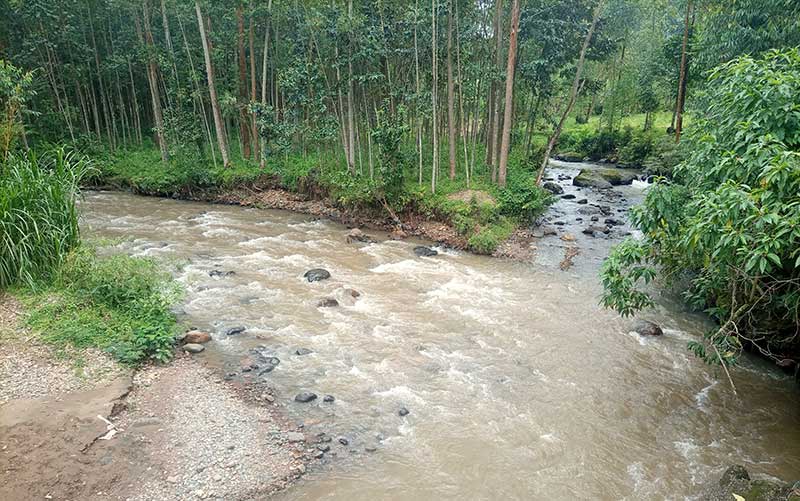
Mount Elgon region is an important water tower for the Nile Basin as it’s the source of numerous rivers
Mount Elgon is a unique geographical feature of outstanding importance to both Uganda and Kenya – the two countries that share its beauty and vast water, flora and fauna resources. It is also of great significance to the wider Nile Basin because it is the source of a large volume of water that descends downwards through numerous rivers and helps to support life as well as propel different economic activities.
A giant caldera – or a lake that is formed above a dead volcano – and the surrounding dense forest that stretches over 2000 square kilometers that sit atop the mountain, are the source of breath-taking rivers such as river Sipi, that flow majestically downstream.
Blessed with over 12 rivers and dozens of seasonal streams, Bududa district in Eastern Uganda exemplifies the importance of the region as one of the most sensitive but also fragile water towers of the Nile basin.
Beyond the abundant surface water that flows through the rivers from the mountain, there is scientific evidence to show that hundreds of thousands of people who live in the districts and provinces that surround Mt. Elgon on both sides of the Kenya Uganda border, are further blessed with another resource –groundwater.
Geological surveys have confirmed that Uganda shares the aquifer around Mt. Elgon with Kenya.
A draft copy of one scientific study commissioned by NBI suggests that the Mt. Elgon aquifer holds huge amounts of water and stretches a distance covering some 37,486km across the two countries.
In Uganda, Mt. Elgon aquifer is believed to cover at least some 9 districts of Kapchorwa, Kween, Amudat, Bududa, Bukwo, Bulambuli, Nakapiripirit, Namisindwa and Sironko. The possibility that nearby districts or even Mbale which sits at the foothill of the imposing mountain, is very high. On the Kenyan side, the aquifer spans four counties, of West Pokot, Busia Trans-Nzoia and Bungoma.
The Mt. Elgon aquifer, experts argue thrives on constant and delicate balance between recharge and discharge of water, hence the concept of conjunctive use.
As Dr. Maha Ismail explains, groundwater recharge processes happen when surface water filters through the top layers of the soil and through the rocks and sediments that underlie riverbeds until it reaches rock systems that are able to store it for some time. On the other hand, some of the water is discharged through boreholes, as well as through streams and wells.
The widespread availability of numerous rivers, complemented by heavy rainfall and a permeable rock system, are believed to play a critical role in the health of Mt. Elgon aquifer.
Human activities such as settlements and cultivation in the delicate ecosystems of Bududa, coupled with deforestation, are some of the threats that can hamper the recharge process not only for the bigger aquifer but also for nearby smaller aquifers because of the negative impact they may have on rainfall.
Fortunately perhaps, community leaders in Bududa, with help of non-governmental organisations, have been mobilizing farmers to conserve the environment as a way to reduce the impact and speed of landslides.
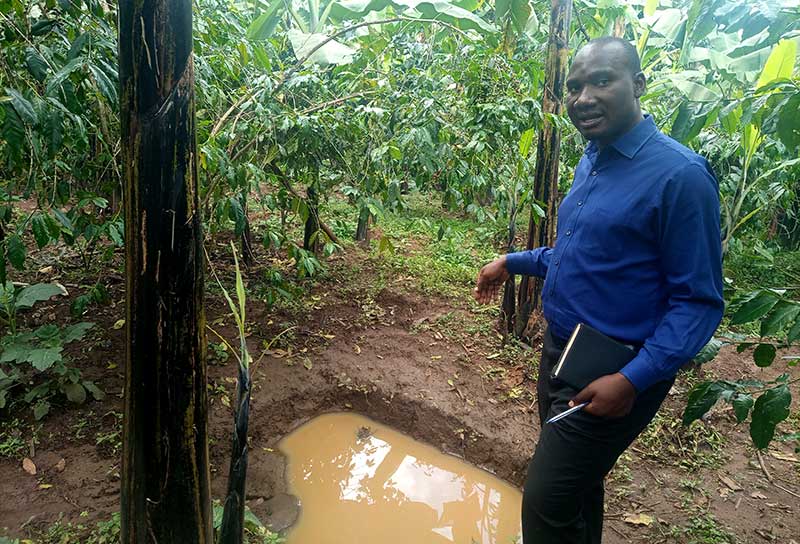
Mr. Sam Wakibi, the Community Development Officer of Bukalasi Sub County in Bududa district shows how they dig pits that trap water and soil to prevent erosion, but also help in groundwater recharge.
In Bukalasi Sub County, which lies on the frontiers of Mt. Elgon national park, community leaders constantly engage the people to dig and maintain gullies that help to reduce soil erosion.
Sam Wakibi, the Community Development Officer of Bukalasi Sub County, in Bududa district explained that with assistance from non-governmental organisations such as Africa 2000 Network, they have taught residents how to raise tree nurseries with a focus on indigenous species.
“We encourage people to plant indigenous trees because they are not quickly-converted into timber like eucalyptus that is common in this region,” says Wakibi.
As they work to prevent landslides, it is believed that the water sinks into the deeper layers of the rocks which enhances the recharge process.
For the residents of Bukalasi, the connection between what they do upstream and how it impacts their close relatives in Namakye, is less well appreciated. One hopes, that may be if this knowledge was more readily available, the interdependency would be greatly encouraged.
This story was produced in June 2022, supported by InfoNile and Media in Cooperation and Transition (MiCT) in collaboration with the Nile Basin Initiative (NBI) and with support from the Deutche Gesellschaft fur Internationale Zusammenarbeit (GIZ) GmbH, commissioned by the European Union and Federal German Government.

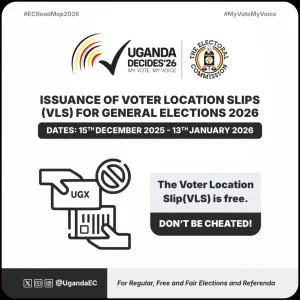
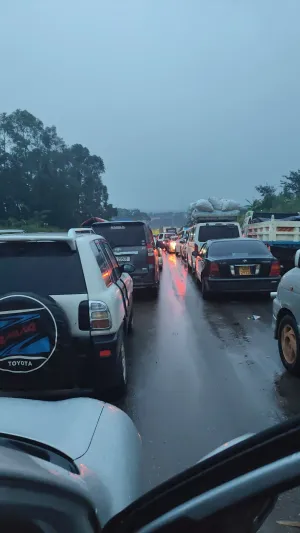

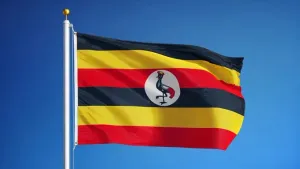
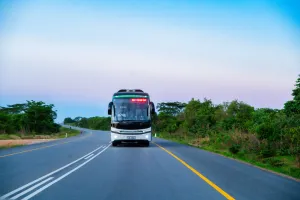
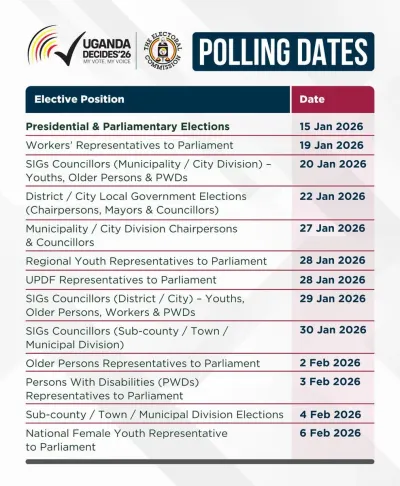

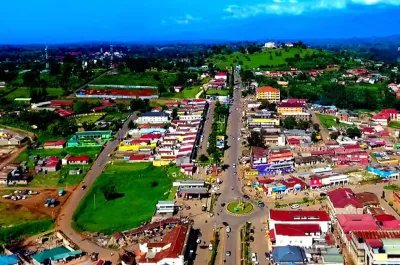
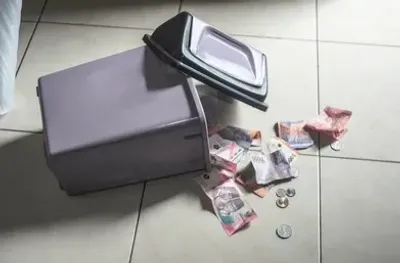




Henry Lutaaya
Leave a Comment
Your email address will not be published.